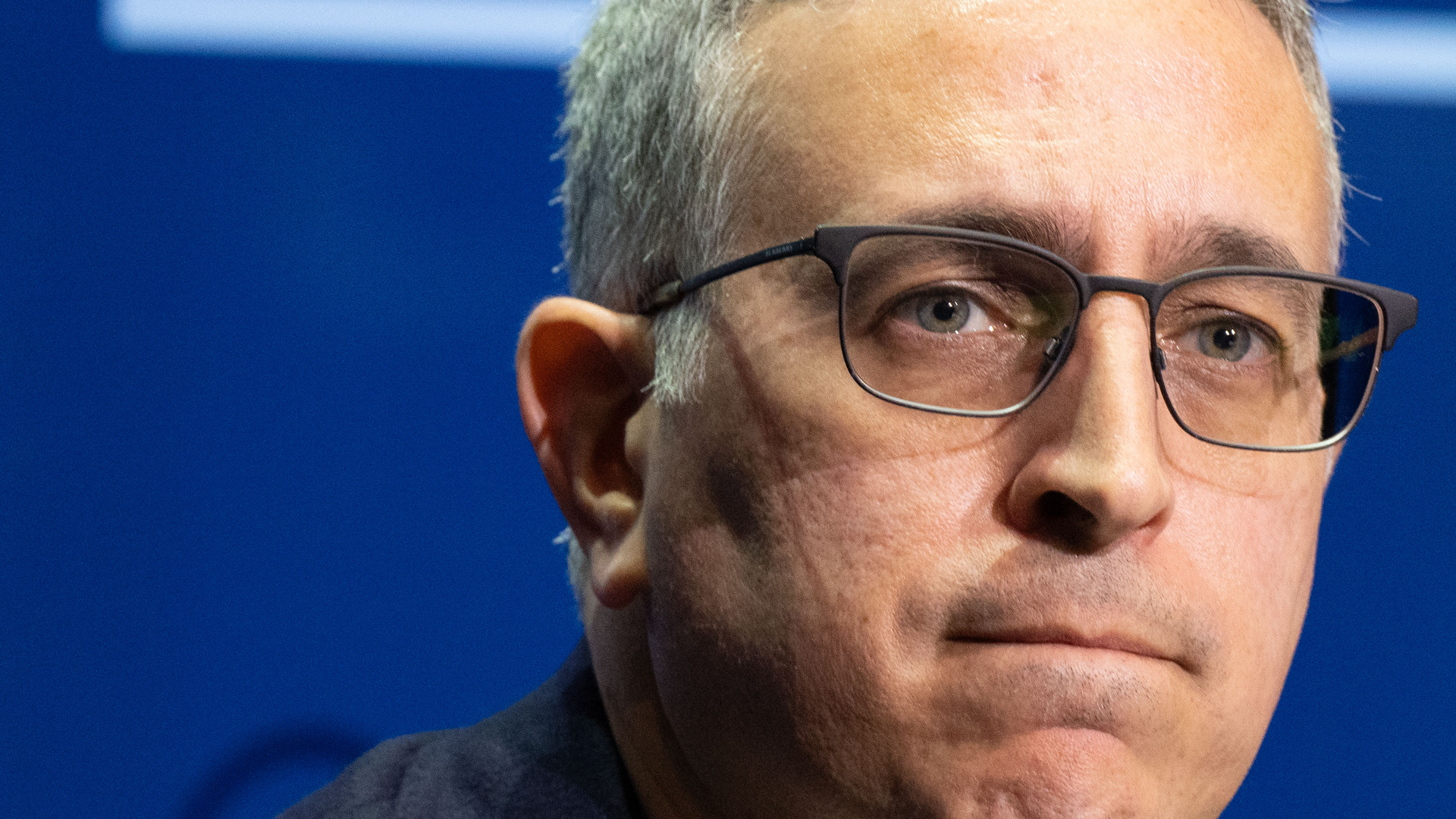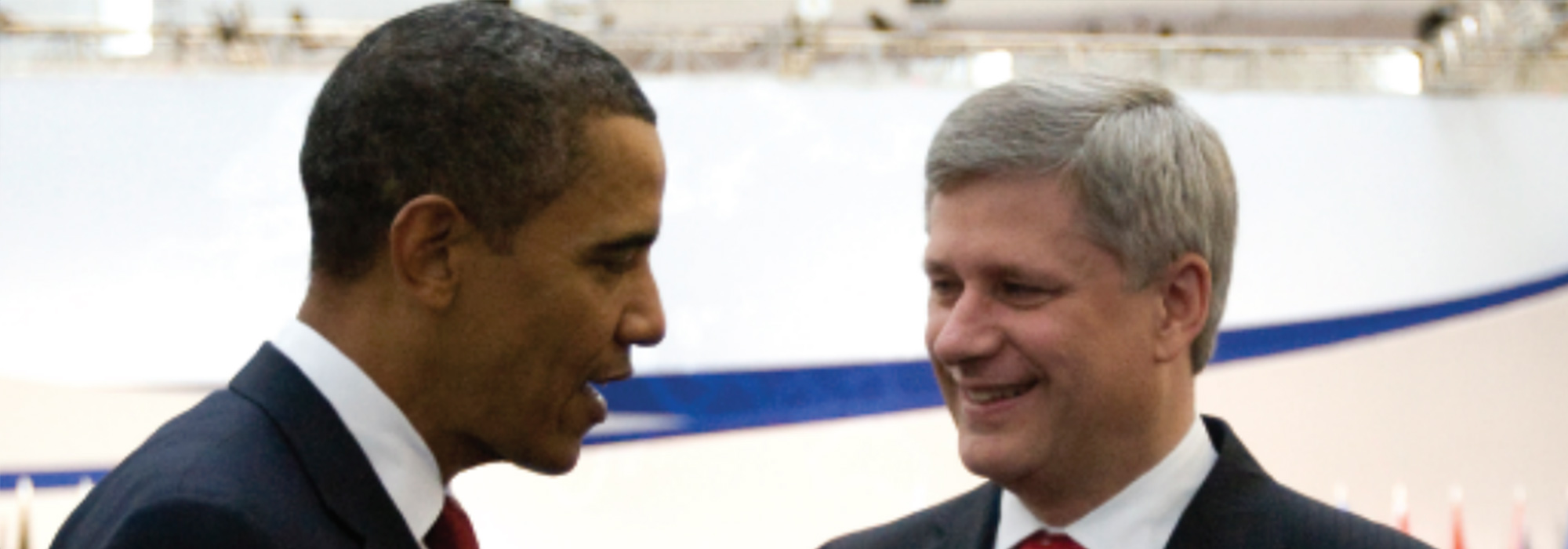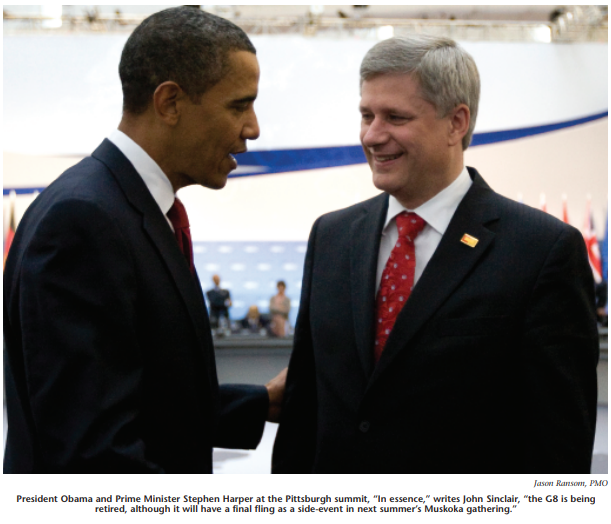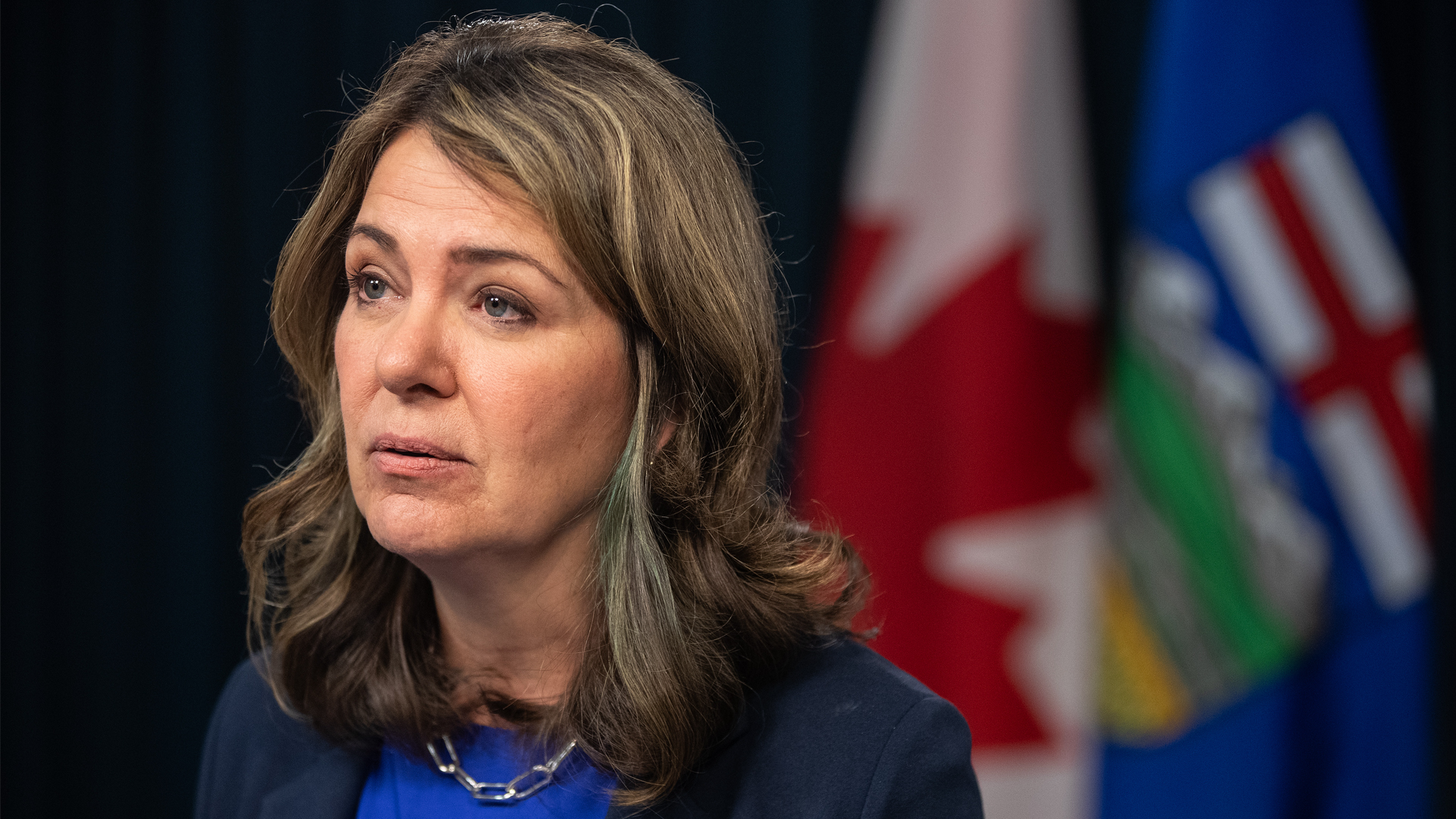
We live in turbulent times. Today’s world, just a few years late to be a millennium event, is probably at a fundamental turning point. After over a decade of fat days, at least for the West and a few privileged emerging nations, we are confronting a global economy that is still on life support. For a few months serious sober observers in Washington, London, and Ottawa thought they were seeing capitalism as a guiding force come crumbling down like the Twin Towers.
The present global economic structure flowed from the industrial revolution with its roots in cheap energy: coal, then oil. It was sustained by the OECD countries’ dominance of the economic instruments that shaped global finance and trade. All that is slowly but irreversibly ending, with the rising power of emerging economies and the existential threat of global warming.
How did we get here?
The Western world that emerged from the Second World War, exhausted but self-confident, was determined to build a better world, one of prosperity and peace. It created important new global institutions to further that agenda, starting in 1944 with the Bank for Reconstruction and Development — focused on a shattered Europe — which then morphed into the World Bank and the International Monetary Fund. Together these are known as the Bretton Woods Institutions (BWIs) after the location of the conference in New Hampshire that created them. An initial compromise framework on trade was called the General Agreement on Trade and Tariffs (GATT); this lasted until 1995 when the World Trade Organisation (WTO) came into being. The pièce de résistance in this process was the United Nations, created in 1945. This became an empire of specialized entities with distinct governances, part pure global democracy and part competitive power, including vetoes wielded by the five major victors in the war — the US, the UK, France, the Soviet Union and China.
This rather idealistic framework began to break almost immediately with the advent of the Cold War, the political and nuclear confrontation between the communist USSR and the liberal-capitalist West, which lasted until the collapse of the Soviet Union in the early 1990s. In the interim and since, most of “our” world has lived with its economic systems largely built around the rulebooks of the two core Bretton Woods Institutions.
We need to recall one event that resembled today’s crisis: the events of late 1973 that saw rocketing energy prices and a broader inflationary threat to the major economies. The cause then was political; a response to the Israeli-Arab War. Whatever its roots, this was first real shake-up in the economic dominance of the OECD world, as OPEC countries demonstrated the power of their cartel.
London and the follow-up summit in Pittsburgh in September left unsolved the challenge of global warming. December’s Copenhagen conference will suffer seriously from the absence of the critical bridge, partly in the form of generous funding to help pay for green technology for poorer developing countries, needed as an inducement to China and India to commit to partner a Kyoto II.
Even though we coped, the West felt more vulnerable. We wanted a new institutional framework for leaders to privately debate and crisis-manage global economics and politics: their own cartel, in essence. The G5 was born in 1975 and quickly grew to the G7. It was to be a cosy informal elite club of the major economies, to which Canada was invited in 1976 to add weight to the US bench. It was also a club born of the Cold War without any presence of the Soviet superpower until the 1990s.
This club has persisted almost without change for over 30 years. Outside observers, academics and other economic actors have increasingly felt it was in need of renewal. The G8 was no longer the claimed “full-strength global governance institution.” It was becoming too much political theatre, a staged event, just a photo-op for presidents and prime ministers. It was no longer a place for serious engaged discussion between leaders. Even its own members wanted more substance and greater inclusiveness. Then Canadian finance minister Paul Martin, with others, seized on this mood and the anger over the flawed, IMF-driven response to the Asian financial crisis, to suggest a modest addition in the form of meetings of a broader range of finance ministers, including a few from larger developing countries. Thus the G20 was born, with the first meeting of finance ministers chaired by Canada in December 1999.
In understanding where we are going, we need to look a little more closely at the major forces framing the world:
Globalization. This for now is still the most important driver of them all, even if it is now somewhat in disarray and perhaps ready for a radical makeover. This has been the guiding philosophy of much of economic and political thinking for the last two decades and more. It was the bible for the World Bank, the IMF, their clones, the Regional Development Banks, and bodies such as the WTO when it was created. It was the main reference point for the G7 in diagnosing what policy reform was needed. Conceived of as an economic perspective in which market behaviour, liberalization and deregulation was extrapolated from the country to the multilateral/global level, it has often been extended to the political sphere (the EU, NAFTA, etc.) and even the military (NATO, George W. Bush’s Coalition of the Willing).
While in theory a voluntary process, one that emerges naturally as the optimum solution from laws of market forces, globalization has become flawed for its aggressive undifferentiated application at the global level. The Washington Consensus was a handy checklist when applied by designers of structural adjustment policies at the BWIs; however, for developing countries in deep financial and social crises, it often fell apart when subject to local realpolitik. The declining success rate of the WTO in its various trade reform rounds is another important lesson: as we have discovered in the still unfinished Doha Round, at the margin developing countries will not, cannot, for example, allow their agricultural sectors to implode (with the obvious social consequences) just because US and EU taxpayers are massively subsidizing inefficient dairy farmers or cotton production.
Climate change. This is becoming a central, largely negative force in shaping economic events and development options. For many this is now the existential issue at the global level. If we fail to respond we risk a fundamental disequilibrium in the next 20-30 years: crop failures throughout Sahelian Africa, rising sea levels in countries such as Bangladesh. This is not just a southern issue: much of the Netherlands will also drown and California will become a real desert. Indeed, the developing world believes it is the aggrieved party, forced to innocently bear the lion’s share of the damage caused by industrialized countries over the last century. In the process of a meaningful response, the economic growth model will be transformed for both developed and developing countries, while global political relations may well become increasingly contentious.
Democratization. Not always a focus of our attention, we often overlook the scale of the successive waves: the collapse of the Soviet Union, the demise of military regimes in Africa and the Americas, the end of apartheid. Even when still far from Canadian norms, China, even Iran, are subject to popular pressures for more open and transparent governance. This reality is rebounding on those old democracies (notably middle-sized Europeans ones) in such as the G7 or IMF who wish to preserve old privileges. The West’s rhetoric in praise of democratization is being turned back in our faces by new economic stars.
Emerging economies. These are the heroes, sometimes the villains, of this saga of change. They are part of a developing world that is much less homogeneous than we painted it in the 1970s. Countries still classified as developing are now major actors in the global economy. Some have been there for several decades, notably the OPEC countries, with their access to energy. Others are much newer, often countries that remain poor in per capita terms that have learned how to play the globalization game to become hypercompetitive as exporters of products ranging from shirts and sweaters to giant LED TVs and computer consulting services. The most familiar names are those of the BRICs: Brazil, Russia, India and, now the world’s second largest economy, China. (All of these are now larger than Canada, which was ranked 14th in terms of 2008 GNP.) Others are catching up fast, such as Indonesia, Thailand, South Africa and Egypt.
For an export-orientated, resource-rich Canada we need to internalize the implicit policy message of relative secular decline over the next 20 years for our historic partners in the G7 and elsewhere in middle-tier Europe.
We must not ignore the too-often-forgotten, low-income countries of the Third World, notably the so-called “fragile states,” which are trapped in the vicious cycle of poverty, internal conflict and flawed or failing governance, so well-analyzed by Paul Collier in his book The Bottom Billion. They are the global Achilles’ heel, harbouring the very real risk as incubators of global terrorism, as we see today in states such as Somalia and Afghanistan.
This rising tide of new global actors collided in 2008 with the rapidly moving tsunami of what we know now as the global financial crisis to create the perfect storm. Unlike storms in nature, this one was largely a huge self-inflicted wound due to the “creativity” of greedy, over-confident bankers and mortgage makers in the US and the UK, in a world that had spent most of the previous decade dismantling the regulatory environment designed to reduce such risks (which Canada was lucky or wise enough to have left intact).
In a broader sense this was an inevitable outcome of a failure to resolve the increasing misalignment of huge Chinese-dollar-denominated surpluses and US deficits created by its uncontrolled debt-financed consumer boom and housing bubble.
Such was the scale of the disequilibrium and the inter-connectedness created by globalization that the crisis engulfed the rest of the world within weeks. The early hope that at least the major emerging economies were decoupled was quickly proven wrong (but at least they have now recovered rapidly, unlike the OECD world, where Canada resides). As for low-income developing countries, although total innocents, they are badly hurt by declining remittances, cuts in regular aid flows, and the almost total freezing of the funding they depended upon to finance trade and private investment.
The world urgently needed a new crisis coping mechanism and seized upon the G20, which was elevated to a heads-of-government forum. George W. Bush, despite being a lame duck, and only two months from leaving office, was persuaded in November 2008 to host a first-ever G20 Summit in Washington, a hurried and inconclusive affair. A more sombre and thoughtful second meeting was held in London in April 2009. This focused on getting agreements on a coordinated stimulus package and a plan to strengthen financial institutions, including major new funding for the IMF.
However, London and the follow-up summit in Pittsburgh in September left unsolved the challenge of global warming. December’s Copenhagen conference will suffer seriously from the absence of the critical bridge, partly in the form of generous funding to help pay for green technology for poorer developing countries, needed as an inducement to China and India to commit to partner a Kyoto II.
Skipping quickly over a the distinctly rudderless and largely resultless Aquila G8 meeting chaired by Italy, we came to President Obama’s Pittsburgh G20 Summit. Its key outcome, although institutional not economic (on that unresolved crisis front there is lot more hard grind and delicate politics ahead; but that is another story), was a giant leap into a new global architecture. The communiqué, despite some stalling from a Canadian delegation anxious to protect their turn at G8 leadership in 2010, bluntly recorded the agreement that G20 leaders’ summits would henceforth become the core vehicle for global economic policy dialogue, in official Chinese words an event “conforming with the tide of history.” In essence the G8 was being retired, although it will have a final fling as a side-event in next summer’s Muskoka gathering of G20 leaders, a meeting now to be only co-chaired by the host Canada. The other co-chair is to be South Korea, which has been a full OECD member for over a decade and has a GDP larger than Canada’s. Confusingly, it has been reported as being a voice for emerging economies, something the BRIC countries would presumably strongly disavow.
The new heads-of-government G20 will face many challenges, both economic and environmental. But it is those very challenges that have made it essential and triggered the openness of world leaders to a major restructuring of power relations. There are some in the G7 and some Europeans with IMF board seats who will wish to hold onto their political privileges, but this cannot last. Neither a final deal on the Doha Round, nor a post-Kyoto world at Copenhagen, nor new sanctions against Iran, can be managed within the old G7 alone, when powers such as China, India and Brazil are outside, working toward their own independent economic interests. In joining a viable G20, they want to be equal partners in an institutional reform that recognizes we live in a new multi-polar world.
As the G20 stabilizes as an institution we may need to see some greater clarity as to how it functions. If the G7, and then the G8, had become sleepy and unfocused, the larger membership of the G20 carries some of the same risks, as well as a greater risk of internal division and simple clumsiness, with so many around the table. More specialization will be needed, with the G20 being very selective as to what it will discuss. It will need expertise in practicing effective triage, moving less pressing or more technical topics quickly to subgroups of its ministers or to bodies such as the IMF Committee. In the same way it will need to shed most of its albeit important hangers-on: maybe even those folks from the WBIs, certainly those from more specialized institutions or just friendly countries. The status and role of other related institutions will also need to evolve — for example, what is the OECD about, politically as well as analytically, when it excludes the BRICs?
A fear for many is that the new G20 will just become an expansion of an immutable global elite. This will be denied, especially by the newcomers, but that spirit may need to be institutionalized.
A fear for many is that the new G20 will become just an expansion of an immutable global elite. This will be denied, especially by the newcomers, but that spirit may need to be institutionalized. One tactic used in other forums is to have rotation in the membership; could a G20 as it stabilizes have seats blocked for major regions, which will be open to election from across their membership on say a three-year cycle, as with the UN Security Council (also due for a major reform)? Could one even think one day of a very powerful double seat for the EU; just one for the commission and one for the rotating presidency? The vetoes, as in the new EU treaty, will need to be changed to qualified majorities, with consensus-building (as already in the BWIs) as the desired modality. For those who are focused on the challenges of the poorest states, there is always the fear of these states being forgotten, never having a voice at the table. Could a rotating seat be reserved specifically for a low-income/fragile state such as Haiti or Burundi?
As noted above, there will need to be comparable transitions in other bodies. The most pressing and precedent-setting will be the two Bretton Woods Institutions: the World Bank and the IMF. The most immediate changes were re-agreed in Pittsburgh: a “5 percent or more” shift away from the over-represented (mainly Europeans) to the emerging powers, notably India and China. Moreover, while the US share, at 17 percent, is not nominally disproportionate, everybody expects that they should abandon their veto. The changes will need to be significant: China, the world’s number two economy, has just 3.7 percent, smaller than the percentage held by Japan, Germany, France and the UK. India has fewer votes than have significantly smaller economies such as the Netherlands, Belgium, and Canada. A very similar pattern and need for change holds for the World Bank. So far, there seems to be little sense of immediacy to implement these changes, even if the calculations could be done in a few hours. The IMF seems to have set itself a 2011 deadline. but one might sense some increasingly impatient BRIC voices long before then.
A second long-overdue area for change is in the process of selecting the heads of these two institutions, at present a cosy deal by which the US selects an American as sole candidate for the World Bank and the Europeans do essentially the same for themselves for the IMF. Voting is then a pleasant formality. What is the betting on the date when a retiring Brazilian President Lula or Indian Prime Minister Singh is the winning candidate in a genuine BWI election or on a rotation rule forbidding the same country from winning twice in a row?
Real change may demand even more: new policies that are more collegial and leave space for different approaches to match the political and cultural realities of individual countries. For this we will need institutions and staffs that are more decentralized, and closer, mentally and physically, to their developing country partners/beneficiaries. (In the interim let’s drop the bankers’ word “clients” they often use.)
This is all a rapidly changing world. For the last 40 years or so we have been a privileged participant, but from now on we (and many Europeans) will have to function in a much more competitive institutional environment. To do this Canada should be a strong and imaginative player. We will need to call in some favours from the past and become even more effective at networking in the international arenas of the Commonwealth, the Francophonie, the Pacific Rim and the Atlantic Alliance. The G7 calling card will count for much less; we will need instead to built more upon trusting supportive relationships with our diverse diasporas and the countries with which we have in the past worked as development partners, notably in Africa and Asia. Economically our rich resource base and flexible, multi-ethnic, well-educated population means we will be well-placed to succeed in the emerging world, unless we all fail globally on the climate change challenge. We may need however to learn a little more humility, to go back to being the quiet (but not disengaged) Canadians who share their wealth and work diligently to fix things internationally.
In the short-run, Canada needs to seek the high road and certainly not be seen as dragging its feet on change in the global architecture. We lost some of our leadership space in Pittsburgh, but with commitment, we still have time to make Muskoka into a new beginning for inclusive global cooperation, not the last gasp of a dying institutional regime.
Photo: Jason Ransom, PMO








